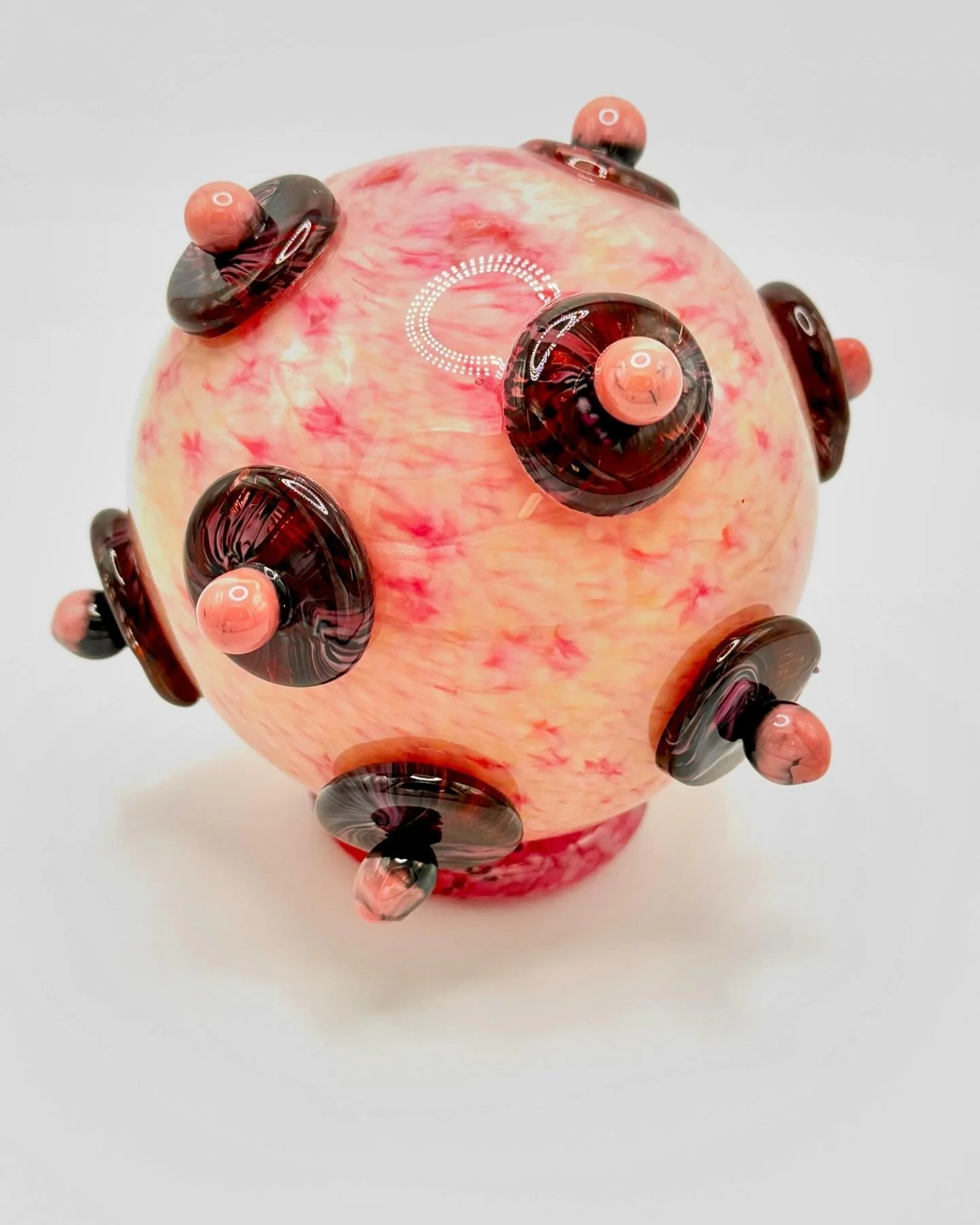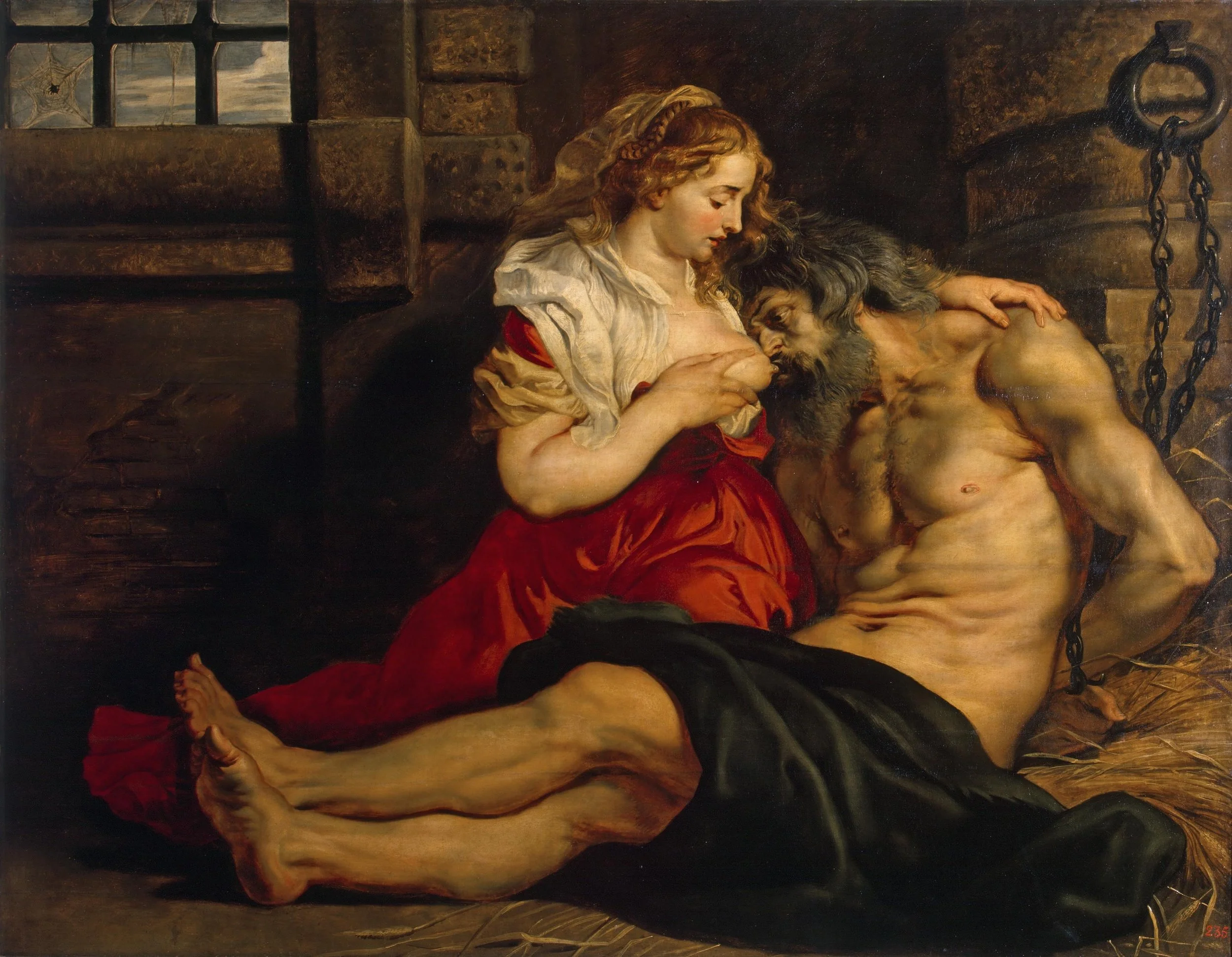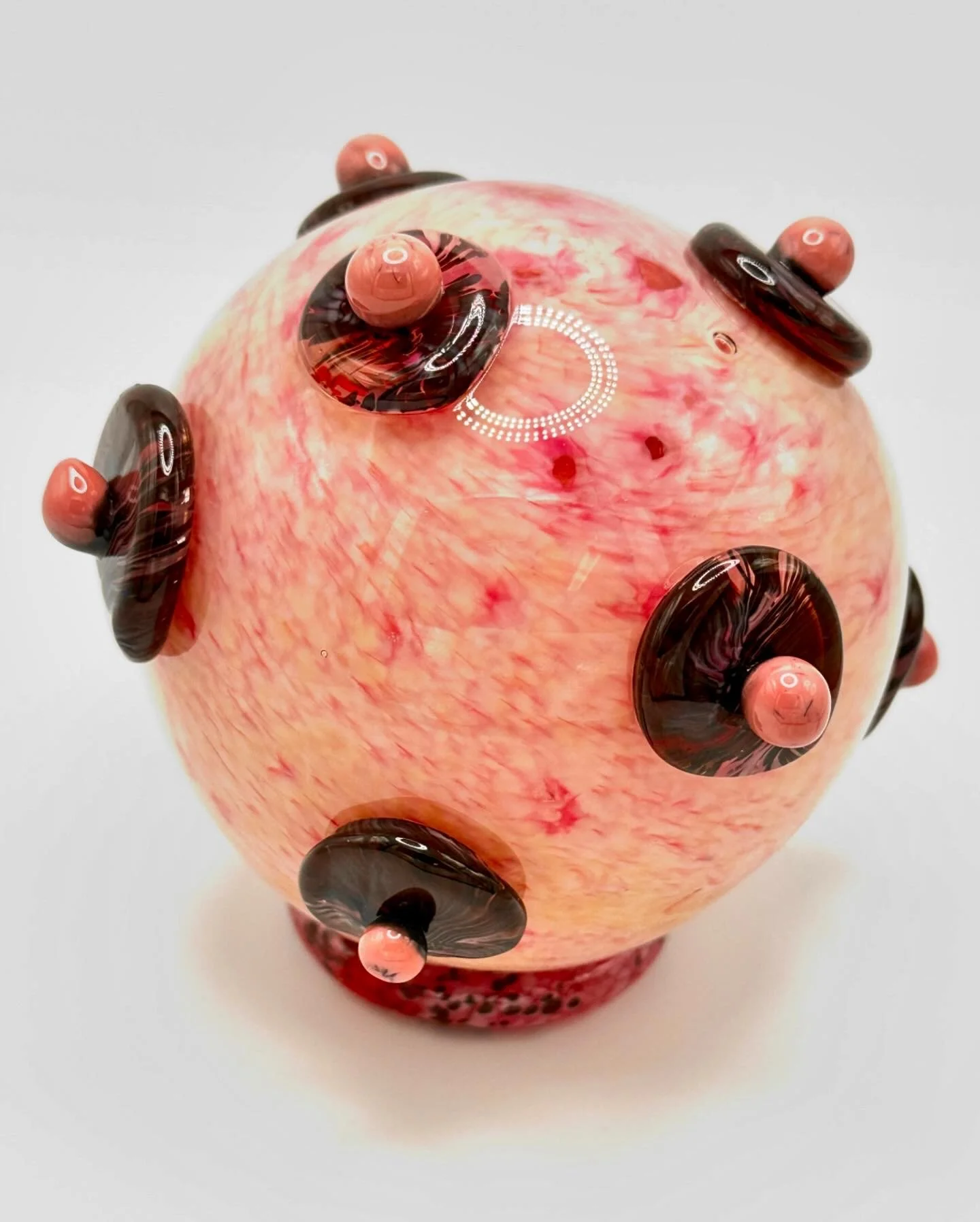New Work: Roman Charity
Roman Charity, 2024
Blown glass, colored frit
Artist Statement: "Roman Charity"
"Roman Charity" is a glass sculpture that draws inspiration from the historical paintings of the same name, which depict the story of Pero and her imprisoned father, Cimon. In these works, Pero secretly breastfeeds her father to keep him alive, symbolizing selfless sacrifice and filial piety. My sculpture, a hollow flesh-colored sphere adorned with nipples, reinterprets this narrative through a modern lens.
Roman Charity, Peter Paul Rubens
Oil on canvas, 1612
Crafted from glass, the piece embodies the fragile and precarious nature of being a woman. Glass, with its delicate and breakable qualities, mirrors the vulnerability and resilience inherent in the female experience. Women are often expected to give so much of themselves that they risk having nothing left, their sacrifices invisible and unacknowledged until they shatter.
The multiple nipples on the sphere serve as a stark commentary on the objectification of women. They symbolize how women are often seen as sources from which to take, further reducing them to mere objects of sustenance and sacrifice. This multiplicity not only underscores the relentless demands placed upon women but also highlights the dehumanization that accompanies such objectification.
As a female artist in a predominantly male medium, my work confronts the societal norms that celebrate and demand excessive self-sacrifice from women. The sphere's form, devoid of an internal structure, speaks to the emptiness that can result from such relentless giving. Women are frequently lauded for their sacrifices, particularly for the men in their lives, yet these expectations can be depleting and unsustainable.
"Roman Charity" is a reflection of my identity and experiences as a woman artist. It challenges the traditional roles imposed upon women, highlighting the need for recognition of their strength and the value of their contributions beyond sacrificial acts. Through this piece, I aim to provoke a dialogue about the often-unseen costs of these societal expectations and to celebrate the resilience and fortitude of women who navigate and resist them daily.




